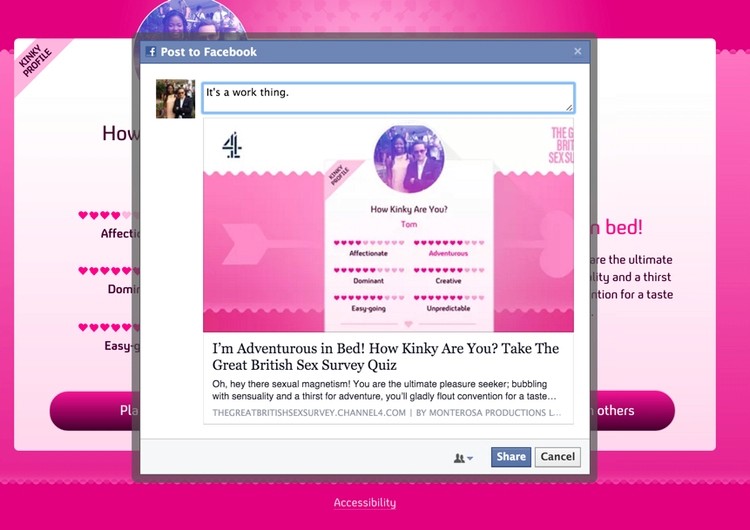Fan engagement is a tricky business. Audiences are bombarded with content options day in day out, on every device. Finding new ways to grab attention is a never-ending challenge.
The last seven days just broke our record for the most live TV events delivered in the most countries around the world. While tech journalists may have moved onto VR, mobile interaction with TV has gone mainstream.
Fremantle’s Norwegian Idol launched last night on Norway’s leading commercial channel TV 2 and introduced free real-time voting for the first time. A significant portion of the Norwegian population picked up their smartphones to vote last night, boosting traffic to TV 2’s website, driving social buzz and national attention.

Channel 4 and All3Media’s controversial Great British Sex Survey special asked the public to take a personality test that assesses their sexual preferences and Kinky factor. They get a personalised sex score-card to share socially (or keep private, depending on how you feel about sharing your perversions). Apparently I’m Adventurous.
In France, Air Productions’ Tout Le Monde Joue returned with impressive audiences playing-along with the “Test The Nation” style gameshow on public broadcaster France 2. This time around, History was the theme and the native iOS and Android app performed flawlessly.
Also in France on commercial channel TF1, The Bachelor came back for its sixth season this week with a live “Love’o’meter” challenge for super fans allowing them to rate the contestants and share their choices on social networks.
In Chile with our partner FunX we power voting and live ratings for Bailando the hit dance format, drawing large spikes of usage and the fourth time we’ve achieved the top spot on the App Store and Google Play.
So what’s driving this growth?
Fans. The most engaged, the biggest advocates for a show, always want to get closer to the characters and stories, and to express their passion for the entertainment they love. SMS is dead. Focussing on a single platform like Twitter or Facebook alone is not enough. Almost nobody watches TV now without at some stage using their smartphone or tablet. Mobile apps, web and social experiences are easily accessible.
Technical Trust. Technically, live interactivity used to be risky. With Monterosa / Interaction Cloud™ we’ve delivered millions of hours of immersive attention with zero failures and achieved the trust of broadcasters and producers. That encourages more creativity. We’re also getting.
Ease of delivery in-house. With the tools available it’s now possible to setup and configure interactivity rather than “build” it. This means broadcasters can deploy a platform for a whole year of shows rather than invest heavily in just one. Applying some custom HTML is easy. Controlling the experience is easy. Even using APIs to build custom solutions in-house is now an option for broadcasters.
Data. Interactivity is an extremely effective driver of owned or first-party data. i.e. data that broadcasters can use to benefit the core business and to improve targeting. There are very few ways to quickly acquire 500,000 new users to a CRM, with visibility of gender, age and preferential data.
Brands. All major advertisers are investing in mobile. Soon there will be no sponsorship or airtime deals that don’t have a major mobile component. With ad blocking on the rise, broadcasters that can’t offer compelling, innovative ways to connect with mobile audiences, will suffer.
Some data and trends
Conversation rates of 5–15% from TV audience are now normal, with some big successes reaching beyond 20% of the TV audience
The male/female split tends to mirror the show itself, normally approaching 50/50
Free mobile experiences attract younger audiences
Android use is growing globally
Tablet use is down, presumably with the advent of larger smartphones
Use of HTML5 apps through mobile web is popular and convenient, particularly for voting
For big shows, fans are more than happy to download native apps with no significant barrier presented
Interactive ideas in TV shows increase the buzz on social networks, even if the experience takes place in an app
What next?
With audience and advertiser demand established, broadcasters must now focus on adoption of consistent technology, formats for brands, and creative execution of format ideas that work on all platforms, 24/7. Only by combining all three pillars, can traditional media businesses reap the benefits of new mobile-centric behaviours.



















